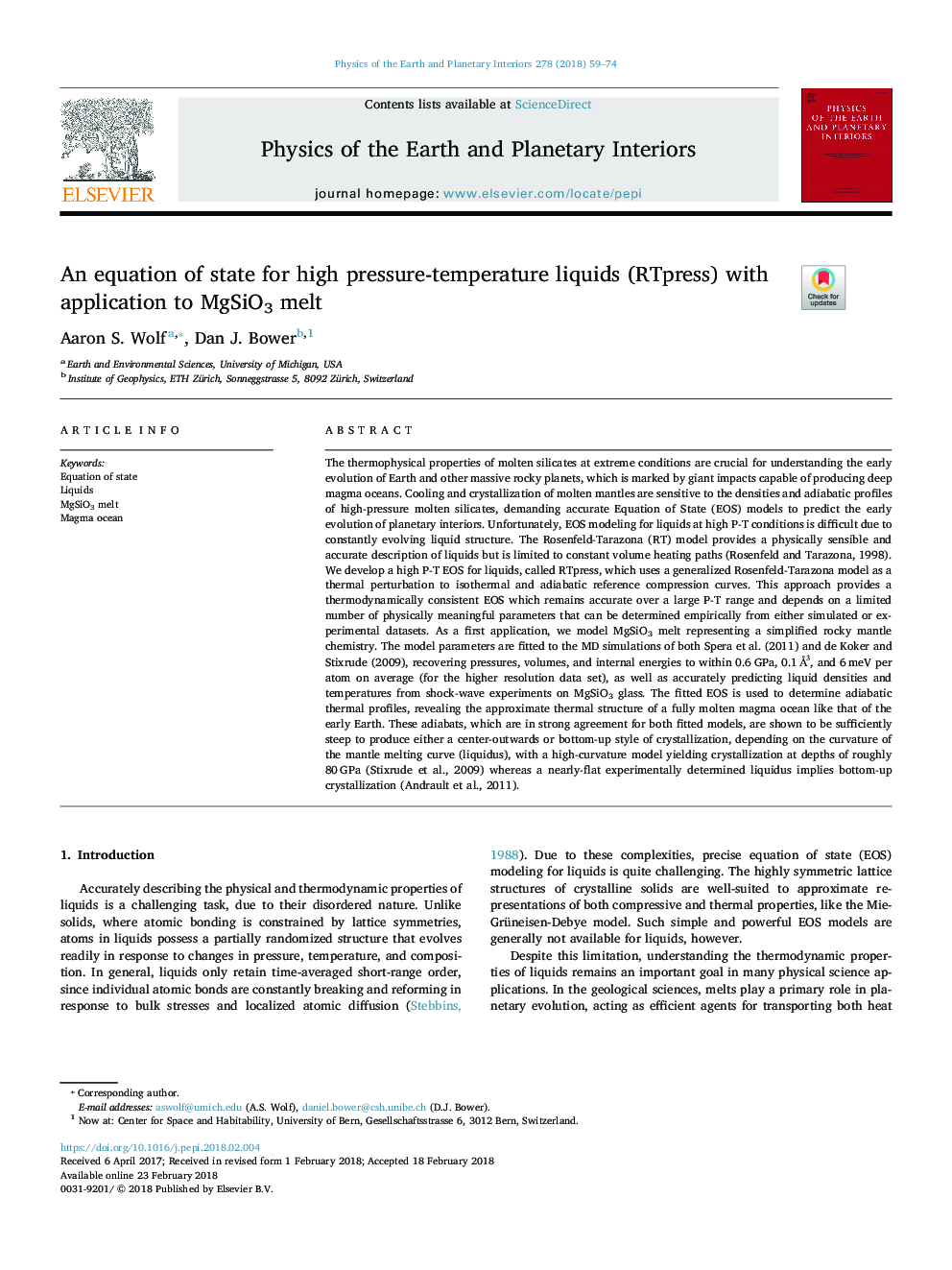| کد مقاله | کد نشریه | سال انتشار | مقاله انگلیسی | نسخه تمام متن |
|---|---|---|---|---|
| 8915704 | 1641462 | 2018 | 16 صفحه PDF | دانلود رایگان |
عنوان انگلیسی مقاله ISI
An equation of state for high pressure-temperature liquids (RTpress) with application to MgSiO3 melt
دانلود مقاله + سفارش ترجمه
دانلود مقاله ISI انگلیسی
رایگان برای ایرانیان
موضوعات مرتبط
مهندسی و علوم پایه
علوم زمین و سیارات
فیزیک زمین (ژئو فیزیک)
پیش نمایش صفحه اول مقاله

چکیده انگلیسی
The thermophysical properties of molten silicates at extreme conditions are crucial for understanding the early evolution of Earth and other massive rocky planets, which is marked by giant impacts capable of producing deep magma oceans. Cooling and crystallization of molten mantles are sensitive to the densities and adiabatic profiles of high-pressure molten silicates, demanding accurate Equation of State (EOS) models to predict the early evolution of planetary interiors. Unfortunately, EOS modeling for liquids at high P-T conditions is difficult due to constantly evolving liquid structure. The Rosenfeld-Tarazona (RT) model provides a physically sensible and accurate description of liquids but is limited to constant volume heating paths (Rosenfeld and Tarazona, 1998). We develop a high P-T EOS for liquids, called RTpress, which uses a generalized Rosenfeld-Tarazona model as a thermal perturbation to isothermal and adiabatic reference compression curves. This approach provides a thermodynamically consistent EOS which remains accurate over a large P-T range and depends on a limited number of physically meaningful parameters that can be determined empirically from either simulated or experimental datasets. As a first application, we model MgSiO3 melt representing a simplified rocky mantle chemistry. The model parameters are fitted to the MD simulations of both Spera et al. (2011) and de Koker and Stixrude (2009), recovering pressures, volumes, and internal energies to within 0.6â¯GPa, 0.1â¯Ã
3, and 6â¯meV per atom on average (for the higher resolution data set), as well as accurately predicting liquid densities and temperatures from shock-wave experiments on MgSiO3 glass. The fitted EOS is used to determine adiabatic thermal profiles, revealing the approximate thermal structure of a fully molten magma ocean like that of the early Earth. These adiabats, which are in strong agreement for both fitted models, are shown to be sufficiently steep to produce either a center-outwards or bottom-up style of crystallization, depending on the curvature of the mantle melting curve (liquidus), with a high-curvature model yielding crystallization at depths of roughly 80â¯GPa (Stixrude et al., 2009) whereas a nearly-flat experimentally determined liquidus implies bottom-up crystallization (Andrault et al., 2011).
ناشر
Database: Elsevier - ScienceDirect (ساینس دایرکت)
Journal: Physics of the Earth and Planetary Interiors - Volume 278, May 2018, Pages 59-74
Journal: Physics of the Earth and Planetary Interiors - Volume 278, May 2018, Pages 59-74
نویسندگان
Aaron S. Wolf, Dan J. Bower,